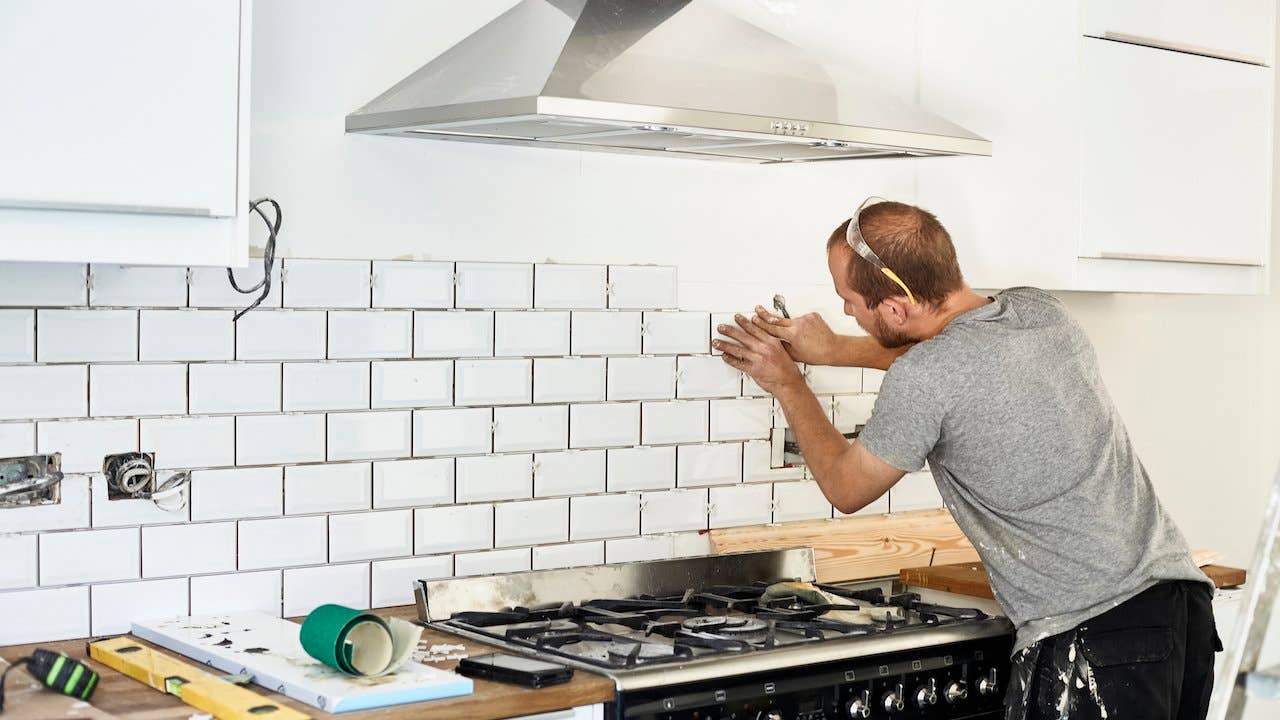The BRRRR method: What it means and what it stands for

Key takeaways
- The BRRRR method is a form of real estate investment that involves buying distressed properties, remodeling them and renting them out, then refinancing and starting again with a new property.
- The idea is for it become an ongoing cycle that allows you to repeat the process over and over, making money each time.
- This method requires a lot of experience, knowledge, skill and time commitment — it’s not suitable for beginners.
If you’re interested in residential real estate investing, you may have heard of the BRRRR method. The acronym stands for Buy, Rehab, Rent, Refinance, Repeat. Similar to house-flipping, this investment strategy focuses on purchasing properties that are not in good shape and fixing them up. But instead of reselling for a one-time profit, you rent them out, generating income while building equity to put toward your next purchase.
What is the BRRRR method?
It’s a way to invest in real estate. The name lays out the steps an investor needs to take to make money using this method. With this investment strategy, investors focus on buying properties that need work. Then they rehab them and rent them out to make enough to cover their mortgage. The next step is to do a cash-out refinance and use the cash to repeat the process all over again with another property. This strategy is not for beginners — BRRRR is complex and requires experience, knowledge and finesse.
Purchasing a home at a discount price is the key to making a profit with the BRRRR method. “All of the money you make will be when you buy,” says Todd Baldwin, a seasoned real estate investor who teaches finance courses online. “Rehab, renting, refinancing and even selling the property are all great, but the money is made when you buy. If you can get a property on terms or under market value, you are doing awesome.”
What BRRRR stands for
This acronym lays out each step the method requires, in order: Buy, Rehab, Rent, Refinance and Repeat.
Buy
Investors using this method shouldn’t buy just any property. It’s important to focus on real estate that needs work, but will also be a sound investment — in other words, it needs to be a good deal. Do your research and make sure you know exactly how much work a property requires. Create a timeline for when renovations will be completed and how soon you can start renting out the property. You should fully understand what you are signing up for before you buy.
Rehab
Determine your method for renovating the property. Will you be doing the work yourself or hiring professionals? If the latter, how much will that cost? Identify the best ways to make your property livable and attractive to renters within an efficient timeline and budget.
“For BRRRR specifically, have a clear understanding of the scope of work needed to be done for the rehab,” says Baldwin. “You want to know your exact cost as well as how long it will take to complete the work. You can lose money very fast if you don’t have a firm grasp on those two aspects.”
Investors should focus on home renovations that offer the highest return on investment. This typically means updating kitchens and bathrooms as needed and, obviously, making sure any hazards are removed. Keep your budget in mind as you plan: A kitchen remodel can cost anywhere from $14,610 to $41,433, according to HomeAdvisor.
Rent
When the rehab is complete and the property is livable, rent it out as soon as possible. The idea is to set a monthly price that will cover your mortgage payment — or, hopefully, more. You’ll also need to determine whether you will manage the rental yourself or use a property management company. The sooner you get it rented out, the sooner that passive income will start rolling in.
Refinance
Once you have a solid renter in place, it becomes a waiting game while you build up your equity in the property. That’s because the next step is refinancing, and BRRRR focuses specifically on cash-out refinancing. A cash-out refi allows you to tap your home’s equity to withdraw cash for any purpose. Different lenders will have different guidelines around how long you must own a property for, or how much equity you must have accrued, to qualify for this kind of refinancing. The cash you withdraw, in this case, is also the final step in the process.
Repeat
This last step is the one that makes BRRRR so appealing — and potentially lucrative. With the cash from your refinance, you invest in a new property and start the whole process over again. Hypothetically, investors can repeat the process over and over, making money on each new property continuously.
Who is the BRRRR method best for?
“No investment comes without risk,” says Baldwin. The BRRRR method is not for everyone — it’s best for those who have solid real estate knowledge and experience, and can accurately gauge market values, renovation costs and more. A miscalculation of price or budget, forgetting to factor in accurate closing costs or failure to secure a renter at the right time and price can result in big monetary losses.
A BRRRR investor must also have enough time to devote to the process. Looking for properties, renovating them and acting as a landlord (potentially for multiple units) is a big time commitment.
BRRRR pros and cons
This investment method can offer great benefits, but there are definite drawbacks as well.
Pros
- You earn steady income: BRRRR investors can create a system that allows them to make passive income, either as an additional revenue stream or to live off of, in an ongoing cycle.
- You build equity: Buying and holding on to multiple properties means your equity will keep going up.
- It’s repeatable: Unlike flipping a house, the BRRRR method isn’t one-and-done — you can keep repeating the strategy and build wealth exponentially as you go.
Cons
- Rehab can be rough: Quality renovations usually do not come cheap, and they can be time consuming as well. Overseeing the work can be stressful. And depending on the extent of repairs needed, you may need to take out a rehab loan. These loans typically have higher interest rates and can be costly.
- It takes time and money to make a profit: BRRRR doesn’t offer fast cash. It’s a slow and steady kind of strategy — you have to put in work and time before you start making money, which means you have to be able to afford the outlay before you can start the earning cycle.
- Being a landlord is a lot of work: Finding and managing renters can be difficult. And the more you repeat the process, the more tenants you will have.
-
There’s financial risk: BRRRR necessitates a lot of educated guesses. Whether you estimate a home’s post-rehab value incorrectly, overestimate the amount of rent you can command or underestimate the renovation budget, there is always a chance you could lose money — and potentially a lot of money.
Getting started
If you’d like to dip a toe into real estate investments before you dive in all the way, try doing a single fix-and-flip first. This will give you an idea of how to hunt for a suitable property, and what the rehab process entails, but as a one-off rather than a perpetual cycle. If you don’t love it, you’re done once you’ve sold the house. But if you want to keep going, you can use your profits from the sale to buy a new place and start again.
You might also try the buy-and-hold method — meaning you still buy a property and fix it up, but instead of reselling as you would in a flip, you keep it and rent it out. This is basically BRR: buy, rehab and rent, without the refi and repeat parts.
Bottom lines
Before you decide to jump into BRRRR real estate investing, research thoroughly and talk to other people who have done it. Baldwin even suggests finding a mentor, if you can. The method can be very lucrative, but you have to know what you are doing — novice investors may be in over their heads.






